CLICK HERE TO WATCH FILM TRAILERS,
PURCHASE DVDs, & STREAM FILMS
PURCHASE DVDs, & STREAM FILMS
Art Therapy
 Over one hundred years ago, some European psychiatrists became interested in the spontaneous art done by patients in mental hospitals. This seemingly irrepressible urge to make art out of any available materials confirmed to them the compelling power of artistic expression to deal with overwhelming internal issues and to reveal inner experience. Because art making provided a means of expression for those who were often uncommunicative, art therapy came into being as a helping profession.
Over one hundred years ago, some European psychiatrists became interested in the spontaneous art done by patients in mental hospitals. This seemingly irrepressible urge to make art out of any available materials confirmed to them the compelling power of artistic expression to deal with overwhelming internal issues and to reveal inner experience. Because art making provided a means of expression for those who were often uncommunicative, art therapy came into being as a helping profession.
Art therapy is a human service profession that uses art media, images, the creative process, and responses to the created products as reflections of an individual’s development, abilities, personality, interests, concerns, and conflicts. Art therapy practice is based on knowledge of human developmental and psychological theories. Art therapists use the full spectrum of models of assessment and treatment including educational, psychodynamic, cognitive, transpersonal, and other therapeutic means of reconciling emotional conflicts, fostering self-awareness, developing social skills, managing behavior, solving problems, reducing anxiety, aiding reality orientation, and increasing self-esteem.
Art therapy as a distinct field developed simultaneously in England and the United States. Margaret Naumburg, considered its founder in this country, was an educator who started the Walden School in New York City, and who wrote several books on art therapy with psychiatric patients in the 1940s and 1950s. Edith Kramer, an artist and educator, developed a rationale for work with troubled children, publishing her work in the 1950s. At the same time, artists volunteering in mental hospitals convinced psychiatrists of the contributions art therapy could make in the treatment of even the most difficult patients.
Theories from psychoanalysis and art education are the foundations for the two poles of the field: art psychotherapy and art as therapy. Most art therapists find that they draw from both approaches, modifying what they do or emphasize according to the needs of those with whom they are working.
The first journal in the field was published in 1961 as the Bulletin of Art Therapy; The Arts in Psychotherapy began publication in 1973. The American Art Therapy Association (AATA), founded in 1969, is the national professional organization; it sponsors annual conferences and regional symposia, approves training programs, and publishes the journal Art Therapy. The first graduate degrees were awarded in the 1970s. Today, there are undergraduate introductory courses and preparatory programs in colleges across the country as well as master’s degree programs approved by AATA.
Educational, professional and ethical standards for art therapists are defined by the American Art Therapy Association. The Art Therapy Credentials Board (ATCB), an independent organization, grants post-graduate Registration (ATR) after reviewing documentation of completion of graduate education and subsequent supervised experience. The Registered Art Therapist who passes the written examination administered by the Art Therapy Credentials Board is qualified as Board Certified (ATR-BC), a credential requiring maintenance through continuing education credits.
Research in art therapy has included studying the influence of depression on the content of drawings, the use of art to assess cognitive skills, the correlation of psychiatric diagnosis and formal variables in art, and the effect of art therapy interventions.
Art therapy has proven to be an effective treatment for the developmentally, medically, educationally, socially, or psychologically impaired, among others. Today people of all ages, races, and ethnic backgrounds are served by art therapists. They are seen in individual, couple, family and group art therapy in mental health, rehabilitation, medical, educational, forensic and other institutions across the country and around the world.
Drama Therapy
 Drama Therapy is defined by the National Association for Drama Therapy as “the systematic and intentional use of drama/theatre processes, products, and associations to achieve the therapeutic goals of symptom relief, emotional and physical integration, and personal growth.” Drama therapy is an active approach that can help individuals to understand more about themselves, and the (conscious and unconscious) directions and choices that they have made.
Drama Therapy is defined by the National Association for Drama Therapy as “the systematic and intentional use of drama/theatre processes, products, and associations to achieve the therapeutic goals of symptom relief, emotional and physical integration, and personal growth.” Drama therapy is an active approach that can help individuals to understand more about themselves, and the (conscious and unconscious) directions and choices that they have made.
In individual, couple, family, or group therapy, individuals are encouraged to tell something about themselves using a variety of modalities including improvisation, role play, puppetry, and storytelling. Through such symbolic enactments, patients can begin to understand in a deeper way some of the many meanings of their idiosyncratic images, feelings, and experiences, broadening and deepening their knowledge of the choices they have made, knowingly and unknowingly, thus strengthening their ability to be more in control of their lives.
Registered Drama Therapists are trained in theatre arts, psychology and psychotherapy – that is, they are educated in drama/theatre as well as in therapy/treatment. The former includes improvisation, puppetry, role-play, pantomime, mask work, and theatrical production. Training in psychology and psychotherapy includes theories of personality, group process, and supervised clinical experience with a broad range of populations. The association supports the study of drama therapy through graduate programs in accredited colleges or universities and also through the NADT approved Alternative Training Programs. Courses of study are evaluated by the association’s Education Committee and the NADT Board of Examiners.
Goals are determined by the needs of each population. Some specific benefits likely to be achieved in drama therapy are reducing feelings of isolation, developing new coping skills and patterns, broadening the range of expression of feelings, experiencing positive interactions, and developing healthier relationships.
Drama therapy is a health and human service profession that dynamically and effectively can address the needs of a broad age range, from young children to the elderly, and can be useful in assessment and treatment, with individuals, couples, families and groups.
Drama therapists may be the primary or adjunctive therapist within a treatment team, depending on the needs of the institution and the individual. Drama therapy is firmly rooted in a belief in the healing power of drama.
Psychodrama
 Psychodrama is a therapeutic discipline which uses action methods, sociometry, role training, and group dynamics to facilitate constructive change in the lives of participants. Based on the theories and methodology of Jacob L. Moreno, M. D. (1889-1974), psychodrama can be found in mental health programs, business, and education. Psychodramatists provide services to diverse groups-from children to the elderly, and from the chronically mentally ill to those seeking understanding and learning in their work settings.
Psychodrama is a therapeutic discipline which uses action methods, sociometry, role training, and group dynamics to facilitate constructive change in the lives of participants. Based on the theories and methodology of Jacob L. Moreno, M. D. (1889-1974), psychodrama can be found in mental health programs, business, and education. Psychodramatists provide services to diverse groups-from children to the elderly, and from the chronically mentally ill to those seeking understanding and learning in their work settings.
By closely approximating life situations in a structured environment, the participant is able to recreate and enact scenes in a way that allows both insight and an opportunity to practice new life skills. In psychodrama, the client (or protagonist) focuses on a specific situation to be enacted. Other members of the group act as auxiliaries, supporting the protagonist in his or her work, by taking the parts or roles of significant others in the scene. This encourages the group as a whole to partake in the therapeutic power of the drama. The trained director helps to recreate scenes which might otherwise not be possible. The psychodrama then becomes an opportunity to practice new and more appropriate behaviors, and evaluate its effectiveness within the supportive atmosphere of the group. Because the dimension of action is present, psychodrama is often empowering in a way that exceeds the more traditional verbal therapies.
There are several additional branches of psychodrama. Sociometry is the study and measure of social choices within a group. Sociometry helps to bring to the surface patterns of acceptance or rejection and fosters increased group cohesion. This surfacing of the value systems and norms f a group allows for restructuring that will lower conflicts and foster synergistic relationships. Sociometry has been used in schools and corporations as well as within the mental health field. Sociodrama is a form of psychodrama that addresses the group’s perceptions on social issues. Rather then being the drama of a single protagonist, this is a process that allows the group as a whole to safely explore various perceptions. Members might address problems such as teenage pregnancy or drug abuse, and together arrive at understanding and innovative responses to these difficult issues.
The American Society of Group Psychotherapy and Psychodrama was founded in April, 1942, by Dr. Moreno. This membership organization fosters the national and international cooperation of all who are concerned with the theory and practice of psychodrama, sociometry, and group psychotherapy. In 1947, Dr. Moreno also started the journal Group Psychotherapy, today known as The Journal of Group Psychotherapy, Psychodrama, and Sociometry, the first journal devoted to group psychotherapy in all its forms.
The American Board of Examiners in Psychodrama, Sociometry and Group Psychotherapy is a national organization that sets and promotes standards for this discipline. Requirements for certification include a master’s degree from an accredited university in a related field, a minimum of 780 training hours under a board certified trainer, and supervised experience. Passing both a written and on-site examination are part of these requirements. There are two levels of certification. A Certified Practitioner (CP) has been professionally trained and supervised in psychodrama, sociometry, and group psychotherapy by a Board certified Trainer, Educator, Practitioner (TEP), has met established standards of the profession and has successfully fulfilled the requirements of the Board of Examiners. A Trainer, Educator, Practitioner (TEP) is a Certified Practitioner who has received a minimum of three years additional supervised training, education, and experience in the design and implementation of professional training programs and has successfully fulfilled the requirements of the Board of Examiners.
Psychodrama seeks to use a person’s creativity and spontaneity to reach his or her highest human potential. With its perspective on the social network in which an individual lives, it promotes mutual support and understanding. In explaining his work, Dr. Moreno stated psychodrama’s goal: to make it possible for every person to take part in creating the structure of the universe which “cannot have less an objective than the whole of mankind.”
Dance/Movement Therapy
 Dance is the most fundamental of the arts, involving direct expression through the body. Thus, it is an intimate and powerful medium for therapy. Based on the assumption that body and mind are interrelated, dance/movement therapy is defined by the American Dance Therapy Association as “the psychotherapeutic use of movement as a process which furthers the emotional, cognitive and physical integration of the individual.” Dance/movement therapy effects changes in feelings, cognition, physical functioning, and behavior.
Dance is the most fundamental of the arts, involving direct expression through the body. Thus, it is an intimate and powerful medium for therapy. Based on the assumption that body and mind are interrelated, dance/movement therapy is defined by the American Dance Therapy Association as “the psychotherapeutic use of movement as a process which furthers the emotional, cognitive and physical integration of the individual.” Dance/movement therapy effects changes in feelings, cognition, physical functioning, and behavior.
Dance as therapy came into existence in the 1940s, especially through the pioneering efforts of Marian Chace. Psychiatrists in Washington, D.C., found that their patients were deriving benefits from attending Chace’s unique dance classes. As a result, Chace was asked to work on the back wards of St. Elizabeths Hospital with patients who had been considered too disturbed to participate in regular group activities. A non-verbal group approach was needed and dance/movement therapy met that need.
The American Dance Therapy Association (ADTA) was founded in 1966 by 73 charter members in 15 states. Now, the Association has grown to nearly 1200 members in 46 states and 20 foreign countries. ADTA maintains a registry of dance/movement therapists who meet specific educational and clinical practice standards. The title “Dance Therapist Registered” (DTR) is granted to entry-level dance/movement therapists who have a master’s degree which includes 700 hours of supervised clinical internship. The advanced level of registry, Academy of Dance Therapists Registered (ADTR), is awarded only after DTRs have completed 3,640 hours of supervised clinical work in an agency, institution, or special school, with additional supervision from an ADTR. In addition, as part of their written application for review by the credentials committee, applicants for ADTR must document their understanding of theory and practice.
The association has a code of ethics and has established standards for professional practice, education and training. Dance/movement therapy academic programs stress coursework in dance/movement therapy theory and practice, movement observation and analysis, human development, psychopathology, cultural diversity, research skills, and group work. In 1979, ADTA established an approval process for the purpose of evaluating these programs. Research and scholarly writings are published in the American Journal of Dance Therapy and in publications funded by the Marian Chace Memorial Fund of the ADTA.
Today, in addition to those with severe emotional disorders, people of all ages and varying conditions receive dance/movement therapy. Examples of these are individuals with eating disorders, adult survivors of violence, sexually and physically abused children, dysfunctional families, the homeless, autistic children, the frail elderly, and substance abusers.
An evolving area of specialization is using dance/movement therapy in disease prevention and health promotion programs and with those who have chronic medical conditions. Many innovative programs provide dance/movement therapy for people with cardiovascular disease, hypertension, chronic pain, or breast cancer.
Research has been undertaken on the effects of dance/movement therapy in special settings (such as prisons and centers for the homeless) and with specific populations including the learning disabled, frail elderly, emotionally disturbed, depressed and suicidal, mentally retarded, substance abusers, visually and hearing impaired, psychotic, and autistic. Those with physical problems (such as amputations, traumatic brain injury, stroke, and chronic pain) and with chronic illnesses (such as anorexia and bulimia, cancer, Alzheimer’s disease, cystic fibrosis, heart disease, diabetes, asthma, AIDS, and arthritis) have also been studied.
In institutions, dance/movement therapists may work as administrators as well as clinicians. Dance/movement therapists who are ADTRs in good standing are also qualified to teach, provide supervision, and engage in private practice.
Music Therapy
 Music Therapy is an established health profession in which music is used within a therapeutic relationship to address physical, emotional, cognitive, and social needs of individuals of all ages. Music therapists use both instrumental and vocal music strategies to facilitate changes that are non-musical in nature. After assessment of the strengths and needs of each client, qualified music therapists provide indicated treatment and participate as members of the interdisciplinary team to support a vast continuum of outcomes.
Music Therapy is an established health profession in which music is used within a therapeutic relationship to address physical, emotional, cognitive, and social needs of individuals of all ages. Music therapists use both instrumental and vocal music strategies to facilitate changes that are non-musical in nature. After assessment of the strengths and needs of each client, qualified music therapists provide indicated treatment and participate as members of the interdisciplinary team to support a vast continuum of outcomes.
Research in music therapy supports the effectiveness of interventions in many areas such as overall physical rehabilitation and facilitating movement, increasing motivation to become engaged in treatment, providing emotional support for clients and their families, and creating an outlet for expression of feelings. Music therapists are employed in many different settings including general hospitals, schools, mental health agencies, rehabilitation centers, nursing homes, forensic settings, and private practice.
Professional Membership
The profession of music therapy has over a 50-year legacy in the United States. The American Music Therapy Association (AMTA) was founded in 1998 as a result of the union of the American Association for Music Therapy (AAMT – founded in 1971) and the National Association for Music Therapy (NAMT – founded in 1950). Its mission is to advance public awareness of the benefits of music therapy and to increase access to quality music therapy services. AMTA is committed to the advancement of education, training, professional standards, and research in support of the music therapy profession.
Professional members of AMTA hold bachelor’s degrees or higher in music therapy from accredited colleges or universities. Thecredential ‘MT-BC” (Music Therapist-Board Certified) is issued by the Certification Board for Music Therapists (CBMT), an independent, non-profit corporation fully accredited by the National Commission for Certifying Agencies. The “MT-BC” is granted by the CBMT upon successful completion of 1) an AMTA approved academic and clinical training program and 2) a written objective national examination.
Prior to 1998, those individuals who successfully completed the rigorous degree requirements of an NAMT or AAMT approved program and internship were issued the designations of Registered Music Therapist (RMT), Certified Music Therapist (CMT), or Advanced Certified Music Therapist (ACMT). The National Music Therapy Registry maintains a listing of current RMTs, CMTs, and ACMTs.
Poetry Therapy
 “In the desert of the heart Let the healing fountain start.”
“In the desert of the heart Let the healing fountain start.”
– W. H. Auden
Poetry therapy and bibliotherapy are terms used synonymously to describe the intentional use of poetry and other forms of literature for healing and personal growth. The term “biblio” means books and, by extension, literature. “Therapy” is derived from the Greek word “therapeia” meaning “to serve or help medically.” Basically then, bibliotherapy is the use of literature to promote mental health.
Developmental interactive bibliotherapy refers to the use of literature, discussion and creative writing with children in schools and hospitals, adults in growth and support groups, and older persons in senior centers and nursing homes. In these community settings, bibliotherapy is used not only to foster growth and development, but it is used as a preventive tool in mental health.
Clinical interactive bibliotherapy refers to the use of literature, discussion and creative writing to promote healing and growth in psychiatric units, community mental health centers, and chemical dependency units.
The National Association for Poetry Therapy (NAPT), incorporated in 1981, confers professional credentials to biblio/poetry therapists who have met its rigorous standards. The poetry therapist today is a professional who is well-grounded in both psychology and literature, as well as group dynamics. NAPT maintains a registry of biblio/poetry therapy practitioners in educational, medical, geriatric, therapeutic, and community settings.
The National Association for Poetry Therapy is a profession that has an ethical code, standards of practice, scientific theories, a body of knowledge and specific training requirements. NAPT sponsors an annual four-day national conference, newsletter, and the Journal for Poetry Therapy, an interdisciplinary journal of practice, research, and education. In 1986, the first federal job classification was created and the first federal bibliotherapist was hired at St. Elizabeths Hospital in Washington, DC. In institutional settings one full-time poetry therapist can lead three groups a day, easily providing 7,000 patient contact visits per year. A registered poetry therapist may also function as a primary therapist or an administrator.
Bibliotherapy has a broad range of applications with people of all ages and is used for health and maintenance, as well as with individuals requiring treatment for various illnesses and conditions. Examples of these are veterans, substance abusers, adolescents, the learning disabled, families with problems, prisoners in rehabilitation, the frail elderly, the physically challenged, and survivors of violence, abuse and incest. The literature and case studies provide evidence that poetry therapy is an effective and powerful tool with many different populations.
The goals of poetry therapy are:
- To develop accuracy and understanding in perceiving self and others;
- To develop creativity, self-expression, and greater self-esteem;
- To strengthen interpersonal skills and communication skills;
- To ventilate overpowering emotions and release tension;
- To find new meaning through new ideas, insights, and information; and
- To promote change and increase coping skills and adaptive functions.
Poetry therapy is an interactive process with three essential components: the literature, the trained facilitator, and the client(s). A trained biblio/poetry therapist selects a poem or other form of written or spoken media to serve as a catalyst and evoke feeling responses for discussion. The interactive process helps the individual to develop on emotional, cognitive, and social levels. The focus is on the person’s reaction to the literature, never losing sight of the primary objective-the psychological health and well-being of the client.
The poetry therapist creates a gentle, non-threatening atmosphere where people feel safe and are invited to share feelings openly and honestly. The facilitator chooses literature that will be effective therapeutically; this requires training, knowledge of literature, and clinical skills. Four stages can be identified with the interactive process:
1. Recognition: To begin with, participants must be able to recognize and identify with the selection.
2. Examination: During this phase, participants explore specific details with the assistance of the bibliotherapist.
3. Juxtaposition: This is a process that explores the significant interplay between contrasts and comparisons. Looking at an experience from a directly opposite point of view can provide an awareness that may become the basis for wise choices in attitude and behavior.
4. Application to Self: Application to Self: It is important for the client to make the connection between the individual and the literature, and to apply the new knowledge to his or her own self in the real world. At the end of the session, the facilitator will provide closure to deal with unfinished business, and help participants to integrate what has been learned. The process of reading and writing, encouraged by the sensitive guidance of professionals trained in bibliotherapy, acts as a significant catalyst for self-integration.
The National Association for Poetry Therapy believes that varied approaches to health care can be of great benefit to our citizens, preventing re-hospitalization, and maximizing health functioning.
 AMERICAN ART THERAPY ASSOCIATION (AATA)
AMERICAN ART THERAPY ASSOCIATION (AATA)
*This site also hosts a list of global art therapy resources.
Related Networks, Associations & Organizations


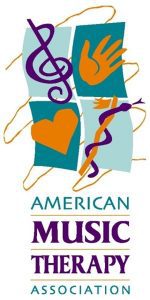 AMERICAN MUSIC THERAPY ASSOCIATION (AMTA)
AMERICAN MUSIC THERAPY ASSOCIATION (AMTA) AMERICAN DANCE THERAPY ASSOCIATION (ADTA)
AMERICAN DANCE THERAPY ASSOCIATION (ADTA)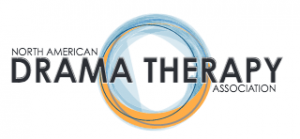 NORTH AMERICAN DRAMA THERAPY ASSOCIATION (NADTA)
NORTH AMERICAN DRAMA THERAPY ASSOCIATION (NADTA)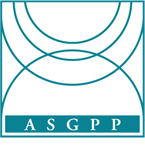 AMERICAN SOCIETY OF GROUP PSYCHOTHERAPY & PSYCHODRAMA (ASGPP)
AMERICAN SOCIETY OF GROUP PSYCHOTHERAPY & PSYCHODRAMA (ASGPP) INTERNATIONAL EXPRESSIVE ARTS THERAPY ASSOCIATION (IEATA)
INTERNATIONAL EXPRESSIVE ARTS THERAPY ASSOCIATION (IEATA)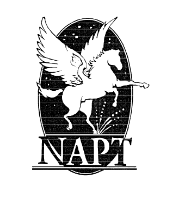 NATIONAL ASSOCIATION FOR POETRY THERAPY (NAPT)
NATIONAL ASSOCIATION FOR POETRY THERAPY (NAPT)
 EUROPEAN CONSORTIUM FOR ARTS THERAPIES EDUCATION (ECARTE)
EUROPEAN CONSORTIUM FOR ARTS THERAPIES EDUCATION (ECARTE)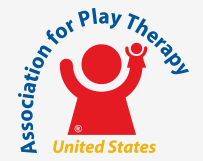 ASSOCIATION FOR PLAY THERAPY (APT)
ASSOCIATION FOR PLAY THERAPY (APT)

 ART THERAPY CREDENTIALS BOARD (ATCB)
ART THERAPY CREDENTIALS BOARD (ATCB)